The Sichuan-Tibet Line: An Iconic Pilgrimage
The Sichuan-Tibet line, also known as G318, is revered as one of China’s most coveted pilgrimage routes. This mesmerizing journey, spanning from Chengdu to Lhasa, serves as both the beginning and ultimate destination of an epic dream.
Embracing Diversity Along the Sichuan-Tibet Route
The Sichuan-Tibet Southern Route, a segment of the iconic G318, promises an adventure filled with diverse experiences. This unforgettable journey invites you to traverse terrains that showcase all four seasons in a single day. Along the way, travellers are treated to enchanting landscapes, from lush grasslands and serene lakes to towering snow-capped mountains, awe-inspiring glaciers, and sacred temples.
Exploring the Enchanting Sichuan-Tibet Line: A Journey to Remember
Chengdu: The Gateway to the Sichuan-Tibet Line
Historical and Cultural Significance of Chengdu
Chengdu, the point of origin for the Sichuan-Tibet Southern Line, boasts an extensive history dating back over 2,000 years. Once a bustling trade hub along the ancient Silk Road, today, it stands as one of China’s largest cities. This modern metropolis, the capital of Sichuan Province, is celebrated for its unique culture, mouthwatering cuisine, and welcoming locals. The city boasts renowned landmarks, including the Wuhou Shrine, Du Fu Thatched Cottage, and the Chengdu Research Base of Giant Panda Breeding. Its thriving economy, marked by industries spanning electronics, machinery, pharmaceuticals, and more, positions Chengdu as an epicenter of innovation and entrepreneurship.
Kuanzhai Alley: A Glimpse into Chengdu’s Heritage
Kuanzhai Alley: A Cultural Treasure
Kuanzhai Alley, also known as Wide and Narrow Alley, is a historical and cultural street in Chengdu. It preserves the architectural style of the Qing Dynasty (1644-1911), offering visitors a glimpse into traditional Chengdu life. The three parallel alleys comprise a rich tapestry of wide streets, lined with high-end shops, tea houses, restaurants, and bars, alongside narrow alleys featuring traditional courtyard houses. Dark grey flagstones pave the way, adorned with carvings, paintings, and traditional Chinese lanterns, creating an enchanting atmosphere. The alleyway not only showcases traditional architecture but also hosts cultural performances, exhibitions, and interactive experiences, including Sichuan opera face-changing and tea ceremonies.
Kangding: Gateway to the Eastern Tibetan Plateau
Discovering the Natural Splendor of Kangding
Kangding, located in the Garzê Tibetan Autonomous Prefecture, Sichuan Province, sits on the eastern edge of the Tibetan Plateau. This picturesque city boasts breathtaking natural scenery, from snow-capped mountains and glaciers to alpine lakes. Renowned for its hot springs, Kangding offers therapeutic relaxation amid its stunning landscapes. Beyond its natural beauty, Kangding is a cultural hub for Tibetan traditions, home to several Tibetan Buddhist monasteries such as the Nanwu Temple, Anjue Temple, and Paoma Mountain. It serves as a gateway to western Sichuan’s treasures, including the Hailuogou Glacier Park and Mount Gongga, the province’s highest peak.
Mount Gongga: Sichuan’s Majestic Peak
Mount Gongga: Sichuan’s Crown Jewel
Mount Gongga, also known as Minya Konka or Gongga Shan, reigns as the highest peak in Sichuan Province. Situated in the Hengduan Mountains, this majestic summit reaches 7,556 meters (24,790 feet). Offering breathtaking vistas of the surrounding landscape, Mount Gongga is a paradise for climbers and hikers. Boasting rich biodiversity, the region is home to over 5,000 species of plants and animals. For the local Tibetan population, the mountain is sacred, believed to be the dwelling place of the goddess of fertility and childbirth. With several monasteries in the vicinity, it plays a vital role in Tibetan Buddhism. While it’s a popular tourist destination, climbing Mount Gongga remains a challenging endeavor suitable for experienced and well-equipped climbers.
Hailuogou: A Low-Altitude Glacier
Hailuogou: A Unique Glacier Experience
Hailuogou, nestled in Sichuan Province, is home to a low-altitude modern glacier. Located within the Hailuogou National Glacier Forest Park, one of its most distinctive features is an awe-inspiring ice waterfall. Formed as the glacier melts during summer, it freezes, creating a mesmerizing frozen waterfall—a must-see for park visitors. Explorers can hike on the glacier, explore ice caves, and enjoy outdoor activities in the surrounding mountains and valleys. As a vital source of fresh water for the region, Hailuogou plays a pivotal role in the local ecosystem. However, like glaciers worldwide, it faces the threat of melting due to climate change. Efforts are underway to protect the glacier’s environment, including measures to reduce carbon emissions and promote sustainable tourism.
Xindu Bridge: A Photographer’s Paradise
Xindu Bridge: Where Nature Meets Engineering Marvel
Xindu Bridge, situated in Sichuan, China, is renowned for its striking beauty, making it a haven for nature photographers. Stretching over a river, the bridge harmoniously blends into the surrounding mountains and clear blue skies, offering an idyllic backdrop for photography enthusiasts. Its intricate lattice structure combines functionality and aesthetics, making it a popular destination for photographers and tourists alike.
Tagong Tibetan Monastery: Embracing Tibetan Spirituality
Tagong Tibetan Sakya Temple: A Spiritual Oasis
Tagong Tibetan Sakya Temple, also known as Lhagang Monastery, resides near Xindu Bridge in the Garzê Tibetan Autonomous Prefecture of Sichuan Province. This prominent Tibetan Buddhist temple, established in 1577, houses a vast collection of Buddhist scriptures, statues, murals, and other religious treasures. The main prayer hall features intricate wood carvings and vivid murals that depict Buddhist teachings and legends. Nestled amid the picturesque mountains and grasslands, this temple is a cherished destination for both pilgrims and tourists.
Lithang: The Cultural City of Kham
Exploring the Rich Culture of Lithang
Lithang, one of the highest counties globally, is located in the Garzê Tibetan Autonomous Prefecture of Sichuan Province. It offers a deep dive into Tibetan culture, earning the moniker “Cultural City of Kham.” The county is famous for its annual horse racing festival, attracting thousands of visitors from around the world. The festival features horse races, traditional Tibetan music and dance performances, and various cultural activities. Beyond cultural attractions, Lithang’s surroundings include snow-capped mountains, grasslands, and forests, teeming with wildlife such as yaks, Tibetan antelopes, and snow leopards. It’s a unique and captivating destination that unveils the rich Tibetan culture and the area’s breathtaking natural beauty.
Sister Lake, Haizi Mountain Range: A Tranquil Retreat
Sister Lake: Nature’s Serene Canvas
Sister Lake, nestled amidst the Haizi Mountain Range, beckons nature enthusiasts and adventure seekers. Its crystal-clear waters, reflecting the surrounding mountains, create a mesmerizing view that leaves visitors in awe. The lake earned its name from its unique shape, resembling a pair of glasses when viewed from above. The area surrounding the lake features lush green forests and meadows, making it an ideal spot for hiking, camping, and a retreat for meditation and relaxation. During the winter months, the lake transforms into a winter wonderland, with a frozen surface that invites ice skaters and winter enthusiasts. Sister Lake is a hidden gem within the Haizi Mountain range, ready to be explored by those seeking a connection with nature.
Yanjing Ancient Salt Pan – Markham: A Journey Through Time
Yanjing Ancient Salt Pan: Where History and Nature Converge
Yanjing Ancient Salt Pan, located in Mangkang County, Tibet Autonomous Region, stands as the largest ancient salt field in Tibet, with a history spanning over 1,300 years. Covering approximately 5 square kilometres at an altitude of 3,700 meters above sea level, this site played a vital role in ancient salt production, with locals boiling brine water in large pans to obtain salt crystals. Today, the site serves as a historical and cultural attraction, where visitors can explore the history and culture of salt production in Tibet. The well-preserved salt pans offer insight into traditional Tibetan salt-making techniques. The surroundings, adorned with snow-capped mountains and pristine blue skies, create a picturesque setting for travellers seeking both historical significance and natural beauty.
Bangda: Tibet’s High-Altitude Town
Bangda: A High-Altitude Marvel
Situated in the Chamdo region of Tibet, China, Bangda is renowned as one of the highest towns globally. Nestled amidst mountainous terrain, it captivates visitors with its stunning natural beauty. Given its high altitude, travellers may experience altitude sickness, making proper acclimatization essential before visiting. Accessible by road, Bangda serves as a popular stopover for travellers exploring the region, offering a unique blend of culture and adventure against the backdrop of Tibet’s awe-inspiring landscapes.
As you embark on the Sichuan-Tibet line, this journey offers an opportunity to explore not only the diverse landscapes of Sichuan and Tibet but also the rich cultural heritage and unique experiences along the way. Whether you’re drawn to the bustling streets of Chengdu, the tranquillity of Sister Lake, or the historical significance of Yanjing Ancient Salt Pan, this iconic pilgrimage route promises an unforgettable adventure through captivating nature and a tapestry of traditions. Discover the wonders of the Sichuan-Tibet line and the enduring beauty of China’s southwestern frontier.
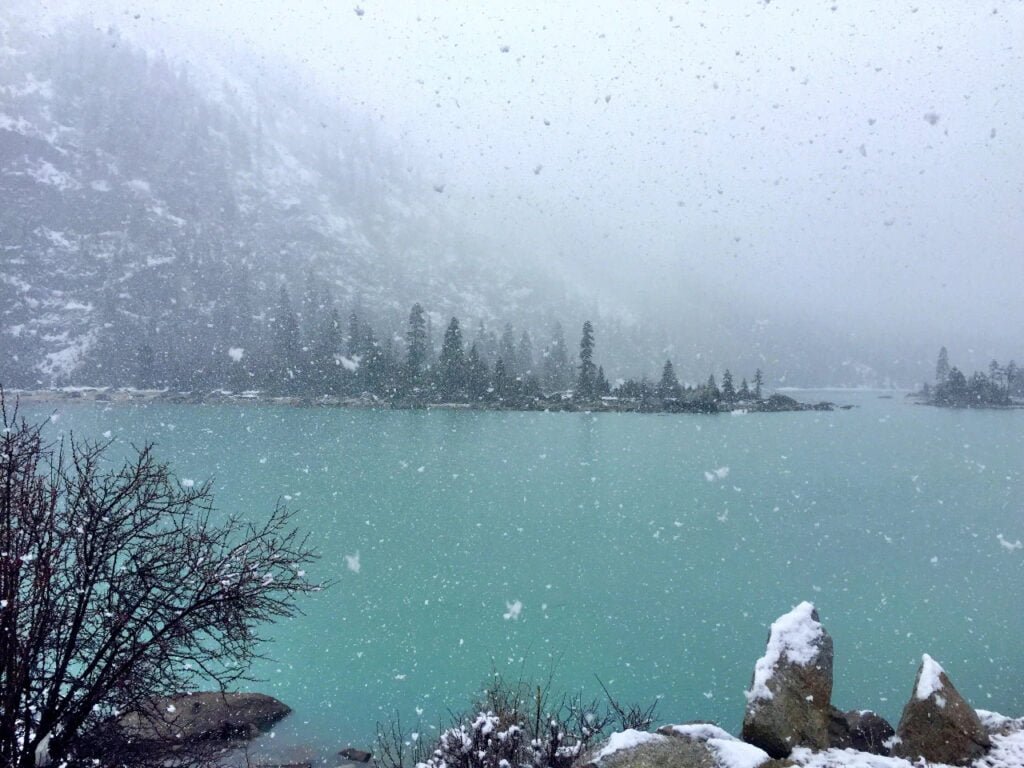
Ranwu Lake: A Gem in the Mountains
Ranwu Lake’s Serene Beauty
Ranwu Lake graces the southeastern part of the Tibet Autonomous Region, nestled near the border of China and Bhutan. Perched at an altitude of 3,850 meters above sea level and spanning 22 square kilometres, this alpine lake is a breathtaking sight to behold. Encircled by towering mountains draped in lush green forests, Ranwu Lake boasts crystal-clear, reflective blue waters. Its exquisite scenery acts like a siren’s call, drawing travellers from across the globe.
Sacred Waters and Wildlife
The local Tibetan people hold Ranwu Lake in deep reverence, considering it a blessed site by the gods. This sacred destination teems with wildlife, including snow leopards, Himalayan bears, and Tibetan antelope. Visitors to Ranwu Lake can partake in various activities, from hiking and camping to fishing and boating. The lake is a photographer’s dream, with sunrise and sunset painting the sky in a breathtaking blend of colors. Ranwu Lake’s natural beauty and cultural significance come together to create an unforgettable experience.
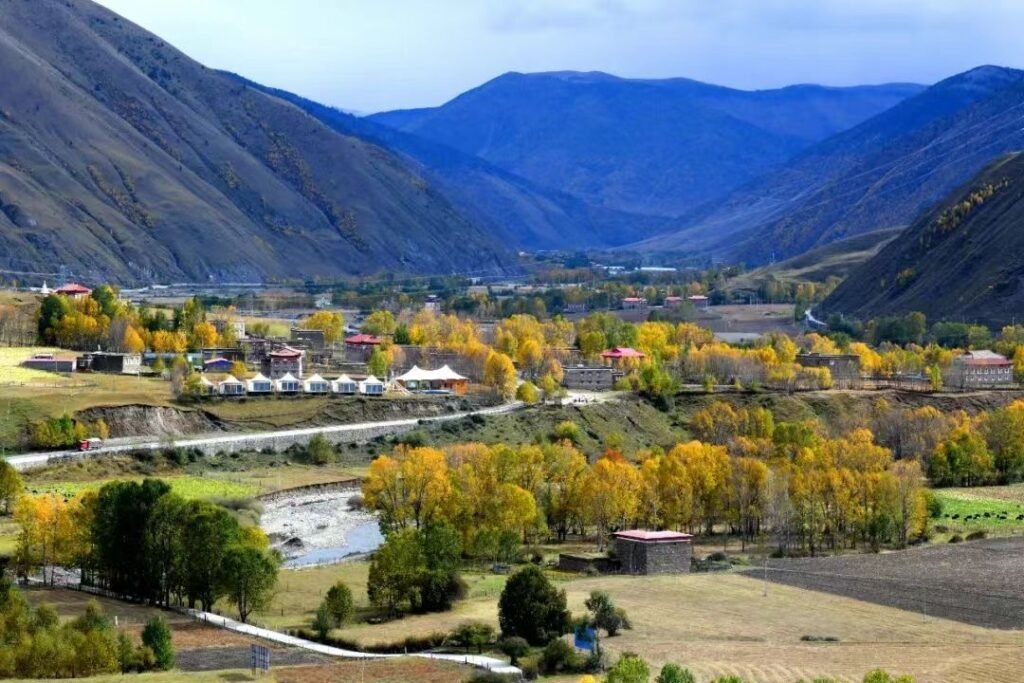
Lulang Linhai Forest: Nature’s Masterpiece in Nyingchi
Nyingchi: A Tapestry of Natural Beauty
Nyingchi, a prefecture-level city in Tibet’s southeastern region, is renowned for its exquisite natural splendor. Here, snow-capped mountains, lush forests, and pristine rivers converge to create a harmonious landscape. Within Nyingchi, Lulang Linhai stands out as a scenic area offering picturesque vistas of the valley, mountains, and the Yarlung Zangbo River. Visitors can ascend to an observation deck via cable car, treating themselves to panoramic views. The area is also a habitat for diverse flora and fauna, including rare treasures like the Yunnan snub-nosed monkey.
Nyingchi Peach Blossom Festival: A Blossoming Extravaganza
A Riot of Color in Nyingchi
The Peach Blossom Festival in Nyingchi is one of the region’s most significant events, gracing late March to early April each year. As the festival unfolds, visitors are treated to a spectacle of peach blossoms amidst a myriad of activities. This includes peach-picking, folk performances, traditional sports competitions, and a culinary feast with peach wine, peach cakes, and other peach-inspired dishes. Nyingchi hosts a range of other festivals throughout the year, including the Tibetan New Year, the Yarlung Culture Festival, and the Lulang Forest Festival, celebrating the unique culture and natural beauty of the region.
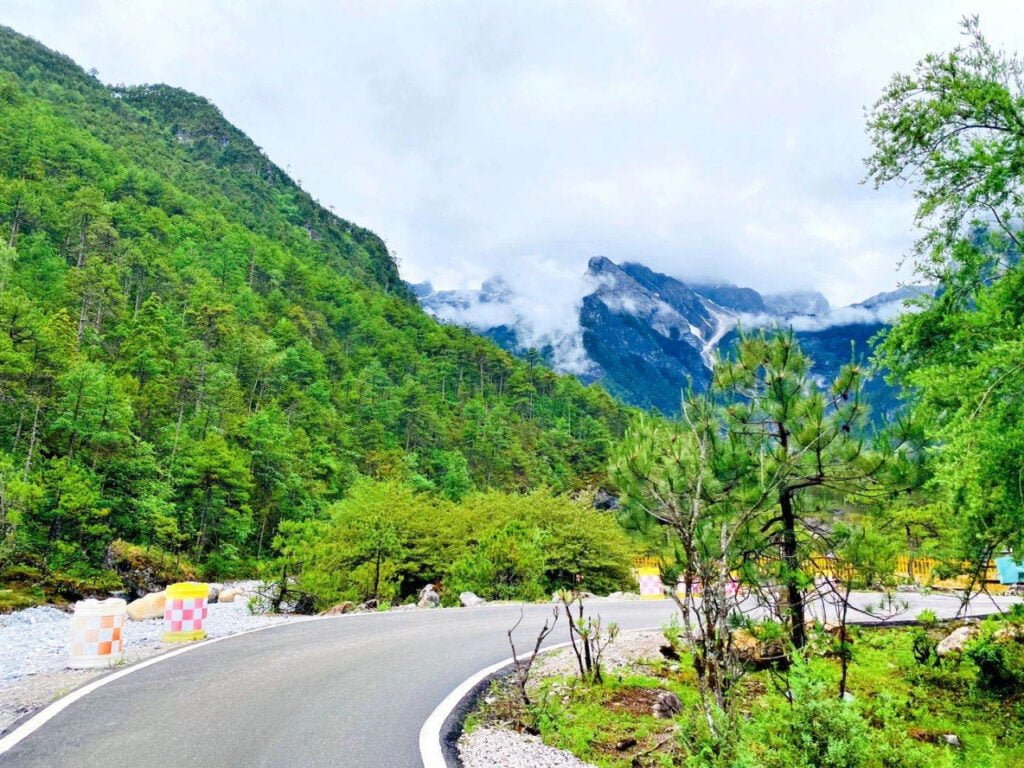
Niyang River: A Pristine Himalayan Tributary
Journey Along Niyang River
Niyang River, a tributary of the Yarlung Tsangpo River, winds through Tibet’s picturesque landscapes. Originating from the Niyang River Glacier in the Himalayas, it meanders through the Niyang Valley before merging with the Yarlung Tsangpo River. Known as the Brahmaputra River in the lower reaches, it’s one of Asia’s major waterways, vital to the livelihoods of those living along its banks.
Mount Namchak Barwa: A Monument to Nature’s Majesty
The Enigmatic Nanjiabawa Peak
Nanjiabawa Peak, the towering summit of Mount Namchak Barwa in Tibet’s Nyingchi region, stands as one of the world’s most challenging peaks to conquer. Its steepness and unpredictable weather make it a formidable adversary for mountaineers. Nestled within a remote, rugged landscape featuring dense forests, deep valleys, and glaciers, the peak looms near the Yarlung Tsangpo River, one of the planet’s highest-altitude rivers, often shrouded in mist and clouds.
An Ascent Both Challenging and Sacred
Nanjiabawa Peak is considered sacred by Tibet’s local inhabitants, believed to be the abode of a powerful deity. As a result, climbing activities on the peak are closely monitored, requiring climbers to secure special permits from the Chinese government.
The Beauty of “China’s Most Beautiful Snowy Mountain”
Nanjiabawa Peak has been bestowed the title of “the most beautiful snowy mountain in China” by “China National Geographic.” Its towering glacier, breathtaking form, and the ethereal interplay of clouds and fog create a mesmerizing sight. Below the mountain, you’ll find the serene scenery of the Yangtze River’s southern regions, adorned with dense vegetation.
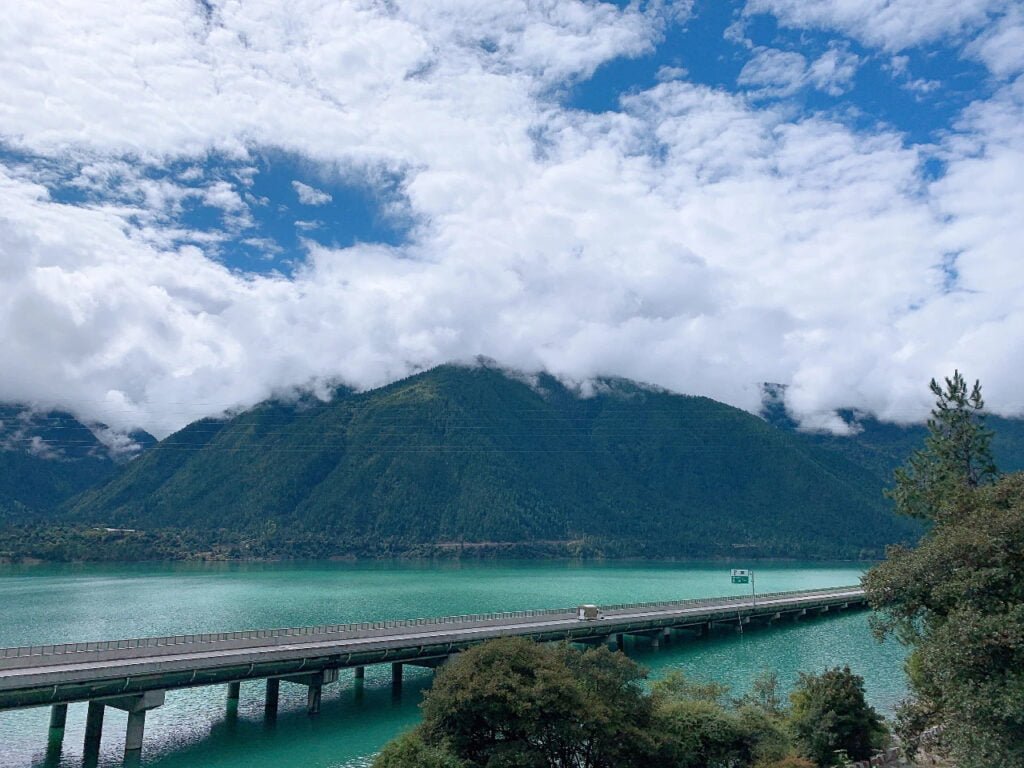
Lhasa: Gateway to Tibet’s Heart
The Mystical Charm of Lhasa
Lhasa, the capital city of the Tibet Autonomous Region, lies nestled along the Sichuan-Tibet Highway in western China. Surrounded by mountains and plateaus and sitting at an altitude of 3,656 meters (12,000 feet), Lhasa is steeped in unique Tibetan culture, boasting historic landmarks and breathtaking natural beauty.
The Scenic Splendor of Sichuan-Tibet Highway
The Sichuan-Tibet Highway, a remarkable route spanning over 2,000 kilometres (1,200 miles) from Chengdu in Sichuan Province to Lhasa, offers one of the world’s most breathtaking journeys. Travelers pass through awe-inspiring landscapes, including the Hengduan Mountains and the Yarlung Tsangpo River gorge.
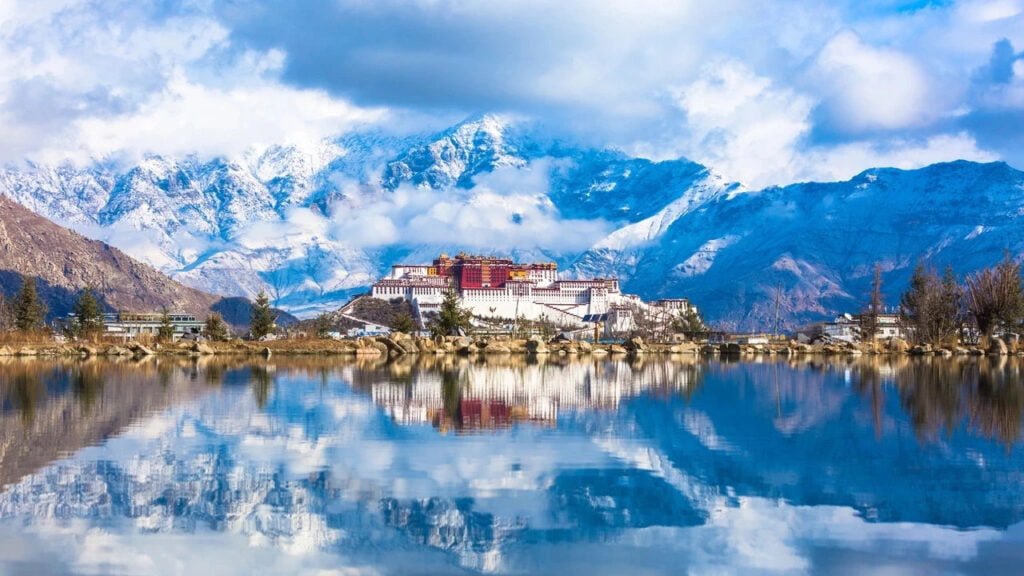
The High-Speed Train to Tibet
Alternatively, travellers can opt for the Sichuan-Tibet High-Speed Train, which embarked on its maiden journey in 2014. Covering a distance of 3,700 kilometres (2,300 miles) in just over 10 hours, this engineering marvel connects Chengdu to Lhasa. The train is equipped with oxygen supply systems, assisting passengers in acclimating to the high altitude, and it treats travellers to magnificent views of Tibet’s vast plateau.
Lhasa’s unique culture, historic sites, and awe-inspiring natural landscapes make it an essential destination for those seeking to explore Tibet’s heart. Its blend of mystical charm, sacred history, and enchanting vistas offers an unforgettable travel experience.
In Tibet, nature, culture, and spirituality merge to create a tapestry of breathtaking destinations that beckon travellers to explore. Whether you’re drawn to the tranquil waters of Ranwu Lake, the lush forests of Nyingchi, or the towering peaks of Mount Namchak Barwa, Tibet offers an adventure that’s as diverse as it is captivating. With each new place you discover, you’ll immerse yourself in the unique beauty and cultural significance of this remarkable region.
Plan your visit to Tibet and embark on a journey that will leave you with unforgettable memories, a deep appreciation for nature, and an enriched understanding of Tibet’s unique cultural tapestry. As you explore each destination, you’ll be captivated by the incredible landscapes and warm hospitality of Tibet’s people.
















